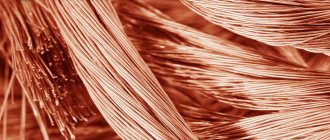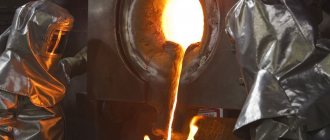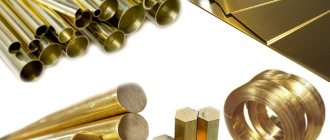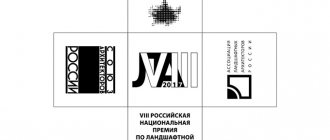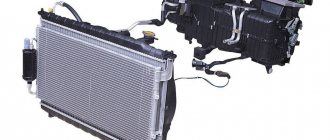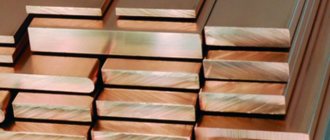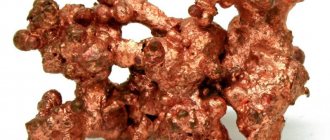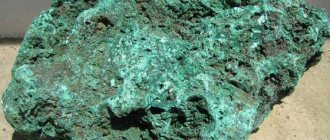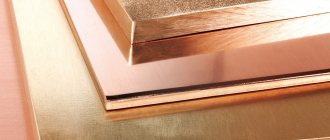The metal, numbered 29 on the periodic table, is known primarily for its high thermal and electrical conductivity. Copper is ideal for creating conductors of various cross-sections, which is also facilitated by the optimal density of the material for these purposes - 8.92 g/cm3. For these and many other reasons, the most common rolled copper products have long been wire and rods. At the same time, industrial enterprises also actively use copper sheets, tapes and even pipes in their work. For their manufacture, they usually try to use pure copper - an alloy in which there are no additives that can significantly affect the basic properties and characteristics of the metal.
By pure copper, technologists understand an alloy in which the share of this metal reaches 99.9%. We are talking about the M1 brand, in which the mass fraction of impurities is actually negligible. Chemical composition of copper alloy M1, made according to GOST 859-2001:
Characteristics of alloy M1
Copper alloy M1 complies with GOST 859 - 2001, can be hard and soft (M1t and M1m), and can be easily processed by pressure and soldering.
Casting properties are low, so cutting and welding are difficult. The influence of impurities in the alloy on the properties of copper M1 (their percentage is indicated in brackets):
- nickel (0.002%), zinc (0.004%), iron (0.005%) and other elements that form solid solutions - reduce thermal and electrical conductivity, the presence of antimony makes hot working more difficult;
- insoluble components, such as bismuth (0.001%), lead (0.005%) - have almost no effect, but make pressure processing difficult;
- inclusions of sulfur (0.004%) and oxygen (0.05%) reduce strength and electrical conductivity.
Under normal conditions, as well as in fresh and sea water, the alloy has anti-corrosion resistance, but deteriorates in ammonia and sulfur environments. M1 copper has a melting point of 1083°C, casting temperature range is 1150-1250°C.
Physical and mechanical properties of alloy M1 (GOST 859-2001)
Pure copper is a material with high electrical conductivity and low electrical resistance (0.0180 μOhm). These characteristics can only be affected by impurities: by increasing the proportion of iron, tin or phosphorus in the alloy, you can reduce the cost of the finished material, but also significantly reduce the electrical conductivity of copper.
The main mechanical and physical characteristics of M1 copper are presented below:
Application of M1 copper
M1 copper is widely used for:
- production of current conductors, tin-free bronze rolled products;
- production of rods and wire for welding;
- creation of cryogenic equipment designs;
- production of electrodes suitable for welding copper and cast iron products.
Also, many products are made from M1 copper alloy. The production of each of them has its own characteristics. Copper sheets and tapes are checked for bending. The slabs are also subjected to certain tests. Pipes with a large cross-section are made by pressing. The properties of finished products are checked for compliance with GOST.
Fill out the information below and our managers will contact you as soon as possible and also advise you on any questions you may have.
Source
Composition and characteristics
Other elements in total should be no more than 0.1%. Impurities may contain the following elements, not more than (GOST 859-2001):
- iron – 0.005%;
- nickel – 0.002%;
- sulfur – 0.004%;
- arsenic – 0.002%;
- lead – 0.005%;
- zinc – 0.004%;
- oxygen – 0.05%;
- antimony – 0.002%;
- bismuth – 0.001%;
- tin – 0.002%.
Copper alloy M1 has excellent physical characteristics: high electrical conductivity and low (0.018 μΩ) electrical resistivity, which after heat treatment by annealing decreases by another 2.8%. The plastic properties of the alloy make it possible to use it for the manufacture of parts used in fixed joints with operating temperatures up to 250°C
Due to the very low impurity content, the cost of M1 copper is 20% higher than the other popular brand, M2. Various types of rolled copper made from M1 alloy are widely used in cryogenic industries. Due to its thermal stability, its viscosity, strength and plastic properties do not change under extreme temperatures.
Chemical composition
| Standard | S | Ni | Fe | Cu | As | Zn | Sn | Sb | Pb | Bi | O |
| GOST 1173-2006 | ≤0.004 | ≤0.002 | ≤0.005 | Remainder | ≤0.002 | ≤0.004 | ≤0.002 | ≤0.002 | ≤0.005 | ≤0.001 | ≤0.05 |
| GOST 16130-90 | ≤0.004 | ≤0.002 | ≤0.005 | Remainder | ≤0.002 | ≤0.004 | ≤0.002 | ≤0.002 | ≤0.005 | ≤0.001 | ≤0.05 |
Cu is the base. According to GOST 1173-2006, GOST 1535-2006 and GOST 859-2001, the total Cu+Ag content is ≥ 99.90%. Copper intended for the electrical industry and subject to testing for electrical conductivity is additionally designated by the letter E at the end of the grade: M1E.
Features of production and application
Copper of a chemical composition similar to the domestic M1 grade is produced in many countries with a developed metallurgical industry:
- Japan (JIS standard), USA – C1100, C1220.
- European Union (EN standard) – Cu-ETP.
- England (BS standard) – C106.
- France (AFNOR standard) – Cu-B.
- Italy (UNI standard) – Cu-DHP.
The undoubted leader in the production of various oxygen-free copper alloys - analogues of the domestic M1 grade is the German metallurgical industry. In accordance with DIN and WNR standards, non-ferrous metallurgy plants produce three types of alloys - Ecu57, ECu58, SF-Cu.
The coefficient of friction of metal with lubricant is 0.011, without lubricant - 0.043. There are two categories of alloys according to GOST 1173-2006 in terms of Brinell hardness:
| solid | HB 10 -1 95MPa |
| soft | HB 10 -1 55MPa |
During the casting process, it must be remembered that the linear shrinkage of M1 is 2.1%. Copper melts at a temperature of 1083°C, casting is carried out in the temperature range of 1150-1250°C.
M1 is produced in the form of cast (horizontal casting ingots, GOST 193-79) or deformed (wire rod, TU 1844-01003292517-2004; strip, GOST 1173-2006; annealed and pressed rod, GOST 1535-2006; pipe, GOST R 52318- 2005) semi-finished products. Rolled sheets must be subjected to bending tests. According to the standard, tape up to 5 mm thick must withstand bending until the sides touch. Thicker sheets (6-12 mm) are checked until the sides are parallel.
Semi-finished products produced by cold rolling are tested for bending at temperatures up to 90°C. Cold-deformed copper pipes (soft, semi-hard, hard) are produced using technology that does not affect further performance. They do not defrost and are resistant to rupture when liquid media freeze. Large cross-section pipes are manufactured using pressing technology.
Alloy M1 is used in cryogenic production. It is used to make current conductors, wire, rods and electrodes for automatic welding and gas welding of non-critical joints of cast iron and copper parts. M1 is the main alloy for the production of high quality bronze.
Source
Standards
| Name | Code | Standards |
| Pipes made of non-ferrous metals and alloys | B64 | GOST 11383-75, GOST 16774-78, GOST 617-2006, OST 4.021.122-92, TU 48-0810-107-86 |
| Rods | B55 | GOST 1535-2006, OST 4.021.019-92, OST 4.021.040-92 |
| Welding and cutting of metals. Soldering, riveting | B05 | GOST 16130-90 |
| Ribbons | B54 | GOST 16358-79, GOST 20707-80, GOST 1173-2006, GOST R 50248-92, OST 4.021.077-92, TU 48-21-349-91, TU 48-21-854-88, STP M137-80 |
| Non-ferrous metals, including rare ones, and their alloys | B51 | GOST 193-79, GOST 859-2001, OST 4.021.009-92 |
| Sheets and strips | B53 | GOST 495-92, GOST 767-91, GOST 5638-75, OST 4.021.049-92, OST 4.021.094-92, TU 1844-046-00219454-2000, TU 48-0810-208-93, TU 48- 0810-103-82, STP M207-78 |
| Hard alloys, metal-ceramic products and metal powders | B56 | TU 14-22-67-94 |
| Wire made of non-ferrous metals and their alloys | B74 | TU 48-21-858-88, TU 48-0809-62-93 |
| Other wire products | B78 | TU 4833-002-08558606-95 |
What grades of copper are there?
Pure copper is not used for the manufacture of products. It is used as ready-made alloys, the compositions of which are regulated by generally accepted standards. In Russia, the main regulation is GOST 859-2001. He describes in detail the grades and compositions of copper alloys, as well as the permissible areas of their use.
Since copper is a non-ferrous metal with unique physical and chemical properties, it is actively used in industry, production, construction and domestic conditions. There is also a separate classification of copper scrap, which is purchased on the secondary market.
Copper M1 (GOST 859-2001): production and application
To obtain rolled copper, two technologies are used: hot and cold deformation. In the first case, drawn and pressed products are obtained (wire, rods, pipes), in the second - cold rolled products (sheets, slabs). The finished products are characterized by both good ductility and high compressive strength. The operating temperature limit for rolled copper is 250°C.
Such properties are widely in demand in the production of equipment, including electrical engineering. Copper alloy M1 (GOST 859-2001), characterized by ductility, toughness and sufficient strength, has no alternative at low temperatures. For example, copper pipes are considered the most reliable in terms of resistance to external temperature fluctuations: they do not deform or break when the water in them freezes or thaws. The only reaction of the alloy is a very slight deformation of the alloy, which has absolutely no effect on the performance of the pipeline.
Copper grades - characteristics and markings with explanation
The designation of metal alloys based on the use of copper begins with the letter “M”. This is followed by a number characterizing the mass fraction of copper in the composition (alloy class). So, when the metal is designated “M3”, the amount of the main element reaches 99.5%, and “M00” - 99.96%. Also, the marking usually indicates additional letters informing about the method of producing the alloy. Methods for creating copper alloys are divided into:
- cathode (denoted by the letter “k”);
- deoxidation with low phosphorus content (“p”);
- without deoxidizing additives – oxygen-free (“b”);
- deoxidation with a large amount of phosphorus (“f”).
The general marking of alloys looks like “M1r”. However, the production method is not always indicated or is not used at all if the processes of hydrolysis, pyrometallurgy or hydrometallurgy were used. In such cases, the designation is limited to the mass fraction. Without taking into account alloy modifications, copper is classified into four main grades:
- M0. The highest class of copper alloys, containing about 99.93-99.99% copper. Sometimes, to improve the physicochemical properties, silver is added to the composition and the percentage of the main element is indicated as copper + silver as a single main component. M0 is the purest copper alloy, which is used for the manufacture of conductive products (power cables, conductors in electronics, household wires, and so on).
- M1. An alloy more common in modern conditions. It is also used to make electrical products with less stringent quality requirements. M1 is also used for the production of rolled metal products, welding electrodes, wire, and so on. The percentage of copper content in M1 is 99.9%.
- M2. This brand is widely used in the production of products requiring high pressure processing. M2 is a less ductile metal, since it contains 99.7% copper. The alloy is often used for the manufacture of cryogenic equipment parts.
- M3. The grade belongs to alloys with the lowest copper content (99.5%). Such metals contain large amounts of impurities and are often obtained from the recycling of copper products. M3 alloy is used to manufacture parts by rolling.
Individual modifications characterize the type and number of additional elements. Detailed information about brands is specified in GOST 859-2001.
What GOST standards for copper scrap exist?
Copper grades - characteristics and markings with explanation
The designation of metal alloys based on the use of copper begins with the letter “M”. This is followed by a number characterizing the mass fraction of copper in the composition (alloy class).
So, when the metal is designated “M3”, the amount of the main element reaches 99.5%, and “M00” - 99.96%. Also, the marking usually indicates additional letters informing about the method of producing the alloy. Methods for creating copper alloys are divided into:
- cathode (denoted by the letter “k”);
- deoxidation with low phosphorus content (“p”);
- without deoxidizing additives – oxygen-free (“b”);
- deoxidation with a large amount of phosphorus (“f”).
The general marking of alloys looks like “M1r”. However, the production method is not always indicated or is not used at all if the processes of hydrolysis, pyrometallurgy or hydrometallurgy were used. In such cases, the designation is limited to the mass fraction. Without taking into account alloy modifications, copper is classified into four main grades:
- M0. The highest class of copper alloys, containing about 99.93-99.99% copper. Sometimes, to improve the physicochemical properties, silver is added to the composition and the percentage of the main element is indicated as copper + silver as a single main component. M0 is the purest copper alloy, which is used for the manufacture of conductive products (power cables, conductors in electronics, household wires, and so on).
- M1. An alloy more common in modern conditions. It is also used to make electrical products with less stringent quality requirements. M1 is also used for the production of rolled metal products, welding electrodes, wire, and so on. The percentage of copper content in M1 is 99.9%.
- M2. This brand is widely used in the production of products requiring high pressure processing. M2 is a less ductile metal, since it contains 99.7% copper. The alloy is often used for the manufacture of cryogenic equipment parts.
- M3. The grade belongs to alloys with the lowest copper content (99.5%). Such metals contain large amounts of impurities and are often obtained from the recycling of copper products. M3 alloy is used to manufacture parts by rolling.
Individual modifications characterize the type and number of additional elements. Detailed information about brands is specified in GOST 859-2001.
Impurities in copper alloys:
- bismuth (0.0005-0.003%);
- iron (0.001-0.05%);
- nickel (up to 0.2%);
- zinc (0.001-0.005%);
- tin and antimony (up to 0.05%);
- arsenic (no more than 0.01%);
- lead (up to 0.05%);
- sulfur (0.002-0.01%);
- oxygen (0.001-0.08%) and others.
If silver is separately indicated in the composition to increase electrical conductivity, the percentage of content does not exceed 0.002.
Standards for Copper Alloys
In our country, there are a large number of regulations used as basic standards that are mandatory when working with copper. The main regulations include:
- GOST 859-2014 “Copper. Stamps."
- GOST 193-2015 “Copper ingots. Technical conditions".
There are specific regulations for certain types of alloys (bronze, brass). The standards are updated periodically.
GOST 859-2001
Previously, this regulation was the main one for copper and copper alloys. However, in 2014 it was replaced by GOST 859-2014. It spells out the main brands, taking into account modern innovations and additional requirements for production processes, production methods, and so on.
Pure copper
Grade M0 contains 99.95% Cu and no more than 0.05% impurities. According to special technical conditions, several grades of vacuum copper and especially oxygen-free pure copper are produced, which is used in the electric vacuum industry. Strips, tapes, rods, and pipes are produced from oxygen-free copper of series A and B. Tapes and rods are made from vacuum pure copper. Rods are produced from pure copper, which is deoxidized with manganese. All these semi-finished products are used in the electrovacuum industry. Oxygen-free pure copper is characterized by a low (-100°C) recrystallization temperature.
Impurities in copper alloys
Since copper practically does not exist in its pure form, the metal already contains other substances. During the manufacturing process, other elements are added to enhance the physical and chemical properties of the alloy and give it unique characteristics. The composition usually contains:
- bismuth (0.0005-0.003%);
- iron (0.001-0.05%);
- nickel (up to 0.2%);
- zinc (0.001-0.005%);
- tin and antimony (up to 0.05%);
- arsenic (no more than 0.01%);
- lead (up to 0.05%);
- sulfur (0.002-0.01%);
- oxygen (0.001-0.08%) and others.
If silver is separately indicated in the composition to increase electrical conductivity, the percentage of content does not exceed 0.002.
Copper rods. Conventions. GOST 1535-2006.
The symbols of copper rods used in documentation and certificates are standardized according to GOST 1535-2006, “Copper rods”.
Recording a symbol
| Bar | X | XX | X | X | … | … | … | … | GOST 1535-2006 |
| Product type | |||||||||
| Preparation method | |||||||||
| Section shape | |||||||||
| Precision manufacturing | |||||||||
| State | |||||||||
| Section dimensions | |||||||||
| Length | |||||||||
| Copper grade | |||||||||
| Special conditions | |||||||||
| Standard | |||||||||
The following abbreviations are used:
- KR - round
- KV - square
- SHG - hexagonal
- N - normal
- P - increased
- B - high
- M - soft
- P - semi-solid
- T - hard
- A - permissible diameter deviations with symmetrical tolerances
- AB - for processing on automatic machines
- L - soft state of increased plasticity
- F - semi-solid state of increased plasticity
- Y - solid state of increased plasticity
- OK - with cut ends
- C - increased accuracy in curvature
- P - regulated requirements for tensile testing
- HB - regulated requirements for Brinell hardness testing
- HV - regulated requirements for Vickers hardness measurement
- BT - rod in free-winding coils
- BU - rod in coils of layer-by-layer ordered winding
An “X” is placed in place of missing data, except for the length designation and special conditions.
If special conditions are not specified by the consumer in the order, then the rods are manufactured with performance conditions at the discretion of the manufacturer.
Examples of bar symbols
Drawn rod, round, high-precision manufacturing, hard, 10 mm in diameter, of unmeasured length, made of M1 grade copper, intended for processing on automatic machines:
- Rod DKRVT 10 ND M1 AB GOST 1535-2006
Drawn rod, hexagonal, high-precision manufacturing, soft, diameter 19mm, length 3000mm, made of copper grade M2:
- Rod DShGPM 19 x 3000 M2 GOST 1535-2006
Drawn rod, square, of normal manufacturing precision, semi-solid, with a diameter of 10 mm, a multiple of the measured length of 1500 mm, from copper grade MZ:
- Rod DKRNP 10 x 1500 KD MZ GOST 1535-2006
Drawn rod, round, high precision manufacturing, semi-solid, diameter 10mm. of unmeasured length, made of copper grade M1, increased ductility, with regulated tensile test requirements, intended for processing on automatic machines:
Pressed rod, round, diameter 35mm, unmeasured length, made of MZ copper:
- Rod GKRHH 35 ND MZ GOST 1535-2006
Copper grades - GOST 859-2001, characteristics, interpretation
Polymer pipes have long supplanted their metal competitors in the field of laying water supply and sewerage communications outside and inside various types of structures in public utilities and household services.
When purchasing pipe products, one of the main selection criteria is their physical parameters, for example, it is useful for a consumer or a craftsman to know the answer to the question - what does pn 20 pipe mean?
Basic information about the characteristics of polymer pipes is indicated on their outer shell; in order to use the data provided, you should understand the decoding of the symbols.
The information obtained is very useful both to the average consumer and to specialists involved in the professional installation of hot (DHW) and cold (CW) water supply and heating pipelines.
Copper
Soft, ductile metal of pinkish-golden color. Its beauty has attracted people since ancient times, so the first products made from copper were jewelry.
In the presence of oxygen, copper ingots and copper products acquire a reddish-yellow hue due to the formation of a film of oxides. In a humid environment in the presence of carbon dioxide, copper turns greenish.
Copper has high thermal and electrical conductivity, which ensures its use in electrical engineering. Does not change properties over a wide range of temperatures from very low to very high. Not magnetic.
In nature, deposits of copper ore are more often found on the surface than other metals. This allows open-pit mining. Large copper nuggets with high copper purity and copper veins are found. In addition, copper is obtained from the following compounds:
- copper pyrite,
- chalcocite,
- bornite,
- covellin,
- cuprite,
- azurite,
- malachite.
Designations and sizes of copper pipes
Copper pipe - 1/2 inch, as well as products of other diameters of the inch system, today are increasingly measured in millimeters. Products with a diameter from 10 mm to 22 mm for water supply systems, and from 32 mm to 42 mm for drainage systems are in great demand.
In addition, there are other designations for pipe sizes. Nowadays, a fraction designation such as 12/14 indicates the outer and inner diameter in millimeters. Previously, 1/4 indicated only the outer diameter (1/4 inch).
According to GOST, the size of a copper pipe is indicated by a fraction. The numerator identifies the outer diameter in millimeters, and the denominator indicates the wall thickness. Pipe 14/1 is a copper tube with a diameter of 14 mm on the outer surface and 13 mm on the inner surface. The wall thickness is 1 millimeter.
Copper alloys, their properties, characteristics, grades
The production of copper alloys makes it possible to improve the properties of copper without losing the main advantages of this metal, as well as to obtain additional useful properties. Copper alloys include: bronze, brass and copper-nickel alloys.
Bronze
An alloy of copper and tin. However, with the development of technology, bronzes also appeared, in which, instead of tin, aluminum, silicon, beryllium and lead were introduced into the alloy. Bronze is harder than copper. They have higher strength ratings. They are better suited to metal forming, especially forging.
Marking of bronzes is carried out using alphanumeric codes, where the first letters are Br, meaning bronze itself. Additional letters indicate alloying elements, and numbers after the letters indicate the percentage of such elements in the alloy. Letter designations of bronze alloying elements:
- A – aluminum,
- B – beryllium,
- F – iron,
- K – silicon,
- Mts – manganese,
- N – nickel,
- O - tin,
- C – lead,
- C – zinc,
- F – phosphorus.
Description
M1 copper is used : for the production of current conductors; rental; high-quality tin-free bronzes; cryogenic equipment products; round drawn thin-walled pipes; cold-rolled foil and strip, cold-rolled and hot-rolled sheets and plates for general purposes; wires for the manufacture of metal shielding braids of the PML type, intended for shielding wires and cables; hot-rolled and cold-rolled anodes used for galvanic coating of products; cold-deformed rectangular tape with a thickness of 0.16−0.30 mm, intended for coaxial trunk cables; radiator tapes intended for the manufacture of cooling tubes and radiator plates; drawn pipes of rectangular and square cross-section, intended for the manufacture of conductors for stator windings of liquid-cooled electrical machines; profiles for the manufacture of rotors of submersible electric motors; round welding wire and round welding rods drawn and pressed with a diameter from 1.2 to 8.0 mm, intended for automatic welding in an inert gas environment, submerged arc and gas welding of non-critical structures made of copper, as well as the manufacture of electrodes for welding copper and cast iron.
Note
M1 copper is obtained by melting cathodes. Copper grade M1 in chemical composition corresponds to copper grade Cu-ETP according to Euronorm EN 1652:1998.
Mechanical characteristics
| Section, mm | σB, MPa | d5, % | d10 | d10 | Brinell hardness, MPa | HV, MPa |
| Tape in delivery condition according to TU 48-21-854-88 (samples) | ||||||
| 0.2-3.53 | — | — | ≥36 | — | — | — |
| ≤2.5 | ≥310 | — | — | — | — | — |
| 2.5-3.53 | ≥284 | — | — | — | — | — |
| Cold-deformed tape of rectangular cross-section as delivered according to GOST 16358-79 (sample) | ||||||
| 0.26-0.3 | ≥210 | — | ≥25 | — | — | — |
| Cold rolled strip 0.05-2.0 mm in delivery condition according to OST 4.021.077-92 (transverse samples) | ||||||
| — | 200-260 | — | ≥36 | — | — | — |
| — | ≥290 | — | ≥3 | — | — | — |
| Tapes and sheets (≥0.5 mm) as delivered (cross-sectional samples) | ||||||
| — | ≥200 | — | — | ≥30 | — | — |
| — | 200-260 | ≥45 | — | ≥36 | ≥55 | 40-65 |
| — | 240-310 | ≥15 | — | ≥12 | ≥75 | 65-95 |
| — | ≥290 | ≥6 | — | ≥3 | ≥95 | 90-110 |
| Rolled sheets in delivery condition according to OST 4.021.049-92 (transverse samples) | ||||||
| 0.4-10 | 200-260 | — | — | ≥36 | ≥55 | — |
| 0.4-10 | ≥290 | — | — | ≥3 | ≥95 | — |
| Rods according to OST 4.021.019-92, GOST 1535-2006 in delivery condition (longitudinal samples) | ||||||
| — | ≥190 | ≥35 | — | ≥30 | ≥35 | ≥40 |
| — | ≥200 | ≥40 | — | ≥35 | ≥40 | 40-60 |
| — | ≥240 | ≥15 | — | ≥10 | ≥60 | 70-95 |
| — | ≥270 | ≥8 | — | ≥5 | ≥70 | 90-115 |
| Hexagonal drawn rods according to OST 4.021.040-92 (longitudinal samples) | ||||||
| 6-10 | ≥200 | ≥40 | — | ≥35 | — | — |
| 6-10 | ≥270 | ≥8 | — | ≥5 | — | — |
| Drawn pipes of rectangular and square cross-section as delivered in accordance with GOST 16774-78 | ||||||
| ≥200 | — | — | ≥35 | — | — | |
| Cold-deformed and pressed pipes as delivered in accordance with GOST 617-2006 (the outer diameter is indicated in the cross-section, values for pipes of increased ductility and strength are given in brackets) | ||||||
| ≤360 | ≥200 (210) | ≥38 | — | ≥35 (40) | — | ≤55 |
| ≤360 | ≥240 (270) | ≥10 | — | ≥8 (8) | — | — |
| ≤200 | ≥190 | ≥32 | — | ≥30 | — | ≤80 |
| 200 | ≥180 | ≥32 | — | ≥30 | — | — |
| ≤360 | ≥280 (310) | — | — | — | — | 90-135 |
| Cold-rolled hard foil 0.015-0.050 mm in delivery condition according to GOST 5638-75, OST 4.021.094-92 | ||||||
| ≥290 | — | — | — | — | — | |
Copper m1 m2 m3 difference
Due to their properties, various grades of copper are very popular in the industrial environment. This metal is good because it is flexible and, regardless of the operating environment, with the exception of exposure to sulfur dioxide and ammonia, it is resistant to corrosion.
The external distinctive feature of copper is its pink-red color. Depending on the purity, copper is divided into types with the technical designations M1, M2, M3. This metal comes into production in the form of wire, sheets, pipes, and rods.
This is due to different application situations.
Based on its composition, copper is divided into oxygen-free and deoxidized; the symbol is M0 and M1, respectively. Oxygen-free is used in the manufacture of parts for electrical, electronic, and electrovacuum industrial products. O2 in oxygen-free brands is no more than 0.001%, and in deoxidized ones - 0.01%.
The breakdown of copper grades is presented in the table:
COPPER
Copper is one of the most common non-ferrous metals. It has high anti-corrosion properties both under normal atmospheric conditions and in fresh and sea water and other aggressive environments. However, copper is not stable in ammonia and sulfur dioxide.
Copper can be easily processed by pressure and soldering. Having low casting properties, copper is difficult to cut and welds poorly. In practice, copper is used in the form of rods, sheets, wires, bars and pipes.
Oxygen-free M0 (0.001% O2) and deoxidized M1 (0.01% O2) copper is widely used in electronics, electric vacuum technology, and the electrical industry.
Alloys containing copper have high anti-corrosion properties, resist wear well and have high technical and mechanical characteristics.
Copper comes in different grades: M00, M0, M1, M2 and M3. Copper grades are determined by the purity of its content.
| Copper grade | M00 | M0 | M0b | M1 | M1r | M2 | M2r | M3 | M3r | M4 |
| Copper percentage | 99,99 | 99,95 | 99,97 | 99,90 | 99,90 | 99,70 | 99,70 | 99,50 | 99,50 | 99,00 |
Copper grades M1p, M2p and M3p contain 0.01% oxygen and 0.04% phosphorus. In the composition of copper grades M1, M2 and M3, the percentage of oxygen is 0.05-0.08%.
Brand M0b is characterized by a complete absence of oxygen. The percentage of oxygen in grade MO is up to 0.02%.
How do impurities affect the properties of copper?
Depending on how impurities interact with copper, they are divided into three groups:
· Impurities that form solid solutions with copper - nickel, antimony, aluminum, zinc, iron, tin, etc. These impurities have a significant effect on the electrical and thermal conductivity of copper, reducing them. In view of this, copper M0 and M1, which contain no more than 0.002 As and 0.002 Sb, are used as current conductors. Hot forming is difficult if it contains antimony.
· Impurities that are practically insoluble in copper - bismuth, lead, etc. They practically do not affect the electrical conductivity of copper, but make it difficult to process under pressure.
· Brittle chemical compounds formed when copper is mixed with sulfur and oxygen. Oxygen, which is part of copper, significantly reduces its strength and reduces electrical conductivity. Sulfur helps improve the machinability of copper by cutting.
Bronze is an alloy of copper with aluminum, silicon, tin, beryllium and other elements except zinc. Bronzes are aluminum, silicon, tin, beryllium, etc. – depending on the alloying element.
Bronze marking is a specific sequence, starting with the letter combination “Br”, after which alloying elements are indicated. Alloying elements are listed starting with the element that is in the highest percentage relative to the others.
All bronzes are divided into tin and tin-free
Tin bronzes
Tin bronzes are used in the chemical industry and as anti-friction materials due to their high anti-corrosion and anti-friction properties.
Alloying elements of tin bronzes are phosphorus, zinc, nickel. Zinc, which is part of tin bronzes in an amount of up to 10%, serves to reduce the cost of bronzes. Phosphorus and lead help to increase the antifriction properties of bronze and improve their machinability.
Foundry tin bronzes are used:
· Deformed bronzes - BrOF6.5-0.4; BrOC4-3; BrOTsS4-4-2.5 – used as springs, anti-friction parts, membranes
· Casting bronzes - BrO3Ts12S5, BrO3Ts12S5, BrO4Ts4S17 - used in anti-friction parts, general purpose fittings
Tin-free bronzes
– these are double or multi-component bronzes without tin, which contain elements such as manganese, aluminum, lead, iron, nickel, silicon, beryllium.
Aluminum bronzes
have high technological and mechanical properties, corrosion resistance in tropical climates and sea water. In practice, single-phase bronzes are used for deep stamping; two-phase bronzes are used in the form of shaped casting and subjected to hot deformation.
Aluminum bronzes, having lower casting properties compared to tin bronzes, contribute to a higher density of castings.
Silicon bronzes
. Silicon, which is part of bronze (up to 3.5%), increases its ductility and strength. In combination with manganese and nickel, the corrosion and mechanical properties of silicon bronzes increase. They are widely used when working in aggressive environments, for the manufacture of spring parts that must operate at temperatures up to 2500°C.
Beryllium bronze
have high strength due to heat treatment. They are characterized by high characteristics of elasticity, yield strength and tensile strength, and are resistant to corrosion. They are used in electronic equipment, for spring contacts, membranes, and parts that are subject to wear.
Lead bronzes
are alloys consisting of the inclusion of lead, which is practically insoluble in copper, and copper crystals. The high antifriction properties of lead bronzes make it possible to use them for the manufacture of parts that operate at high speeds and high pressure (sleeve bearing shells). Due to their high thermal conductivity, lead bronze BrS30 helps remove heat generated by friction.
Bronzes alloyed with tin and nickel are characterized by increased corrosion and mechanical properties.
Tin-free bronzes are used:
· Aluminum bronzes - BrAZH9-4, BrAZHN10-4-4, BrA9Zh3L, BrA10Zh3Mts2 - used for pressure treatment, as parts of chemical equipment, fittings and anti-friction parts
Silicon bronzes - BrKMts3-1 - are used as wire for springs, tapes, fittings
· Beryllium bronze - BrB2 - used as rods, wires for springs, tapes, strips
Lead bronze - BrS30 - is used in anti-friction parts
An alloy of copper and zinc, the percentage of zinc in which ranges from 5 to 45%, is called brass. Brass containing 2-20% zinc is called tombac or red brass. If the zinc content is 20-36%, then such brass is called yellow. Brass, with more than 45% zinc in its composition, is used extremely rarely.
Classification of brass:
· Simple (two-component) - alloys that consist of zinc and copper with minor impurities of other elements;
· Special (multicomponent) brasses in their composition include, in addition to copper and zinc, a number of other alloying elements.
Two-component brasses are designated by the capital letter “L”, followed by a two-digit number indicating the average percentage of copper in the alloy (L80 brass, which contains 80% copper and 20% zinc).
The classification of simple brasses is given in the table:
Brand | Alloy composition, % | ||
| Copper | Impurities, no more | ||
| Red brass | L96 | 95-97 | 0,2 |
| L90 | 88-91 | 0,2 | |
| Polutompak | L85 | 84-86 | 0,3 |
| L80 | 79-81 | 0,3 | |
| Brass | L70 | 69-72 | 0,2 |
| L68 | 67-70 | 0,3 | |
| L63 | 62-65 | 0,5 | |
| L60 | 59-62 | 1,0 | |
Plain brass is easy to work with pressure. Typically, they are supplied in the form of pipes and tubes, differing in cross-sectional shape, in the form of tapes, strips, wire, sheets. Brass products with high internal stress are characterized by cracking, which can be avoided by annealing at low temperatures (200-300°C) before long-term storage.
Multi-component brass comes in a greater variety than simple brass.
The marking of special brasses begins with the capital letter “L”, after which the sequence of alloying elements of the alloy (with the exception of zinc) and their percentage content is indicated, starting with the element predominant in the alloy. The amount of zinc is determined according to the difference from 100%.
The alloying elements of brass, the main ones being silicon, manganese, lead, aluminum, iron and nickel, have a significant impact on the properties of brass:
· Tin helps to increase the strength and corrosion resistance of brass in sea water;
· Manganese (especially when combined with tin, iron and aluminum), as well as nickel, increase the alloy’s resistance to corrosion and its strength;
· Lead, which is part of the alloy, worsens its mechanical properties, while ensuring ease of cutting, therefore brass, which requires further processing using automatic machines, has lead as the main alloying element;
· The silicon content in brass alloys negatively affects their strength and hardness. However, if brasses are alloyed with both lead and silicon, their anti-friction properties increase, and such brasses can replace more expensive alloys (for example, tin bronze).
Special brass used:
· Deformable brass LAZH60-1-1 is used as rods, pipes, LZhMts59-1-1 and LS59-1 as pipes, rods, strips, wire
· Casting brass LTs40Mts3Zh are used in parts with complex configurations, propellers and blades, etc.; LTs30A3 - corrosion-resistant parts; LTs40S are used in fittings, cages, ball bushings, etc.
Copper m1 m2 m3 difference - Metalist's Handbook
- 1 Copper M1 - prices in Moscow. Hard, soft, pressed, annealed copper
- 2 Copper sheet grades M1, M1R, M2, M2R, M3, M3R. GOST 495-92
- 3 Copper pipe (tube)
- 4 Copper
- 5 Article about the types and differences of copper scrap, and the services of the Phoenix-C company
sells bushings, round bars, strips, wire rods, sheets, pipes, hexagons, foil, tires and wire from copper alloy M1 at the lowest prices in the assortment.
All types of products are manufactured in accordance with the relevant GOSTs. If necessary, we sell in pieces/blanks. We also provide related services for metalworking, packaging, storage and delivery of goods to various regions of Russia.
We will provide you with a comfortable full-cycle service. Flexible system of discounts. Your own fleet of vehicles - free delivery within Moscow within 1 day. Delivery to the regions in 2-3 days (free delivery to the transport company terminal).
Copper alloy M1 is produced in accordance with GOST 859-2001. This material contains 99.9% copper, as well as other substances: iron, arsenic, nickel, zinc, sulfur, lead, oxygen, bismuth, tin and antimony. This is a highly plastic material with good corrosion resistance. It is highly processed and is part of the manufacturing process for many other metals.
The key alloying elements here are nickel and phosphorus. Copper alloy M1 can be oxygen-free, cathodic, deoxidized with phosphorus or oxygen. At the same time, according to technical parameters, hard and soft copper are distinguished. This alloy is used primarily in the automotive and aircraft industries, as well as in instrument making.
| Copper pipe M1T | Check availability, sizes and prices in the catalogue. |
| Copper pipe M1M (MM) | Check availability, sizes and prices in the catalogue. |
| Copper busbar М1М (ШММ) | Check availability, sizes and prices in the catalogue. |
| Copper bus M1T (SHMT) | Check availability, sizes and prices in the catalogue. |
| Copper wire M1M | Check availability, sizes and prices in the catalogue. |
| Copper wire M1T (MT) | Check availability, sizes and prices in the catalogue. |
| Copper strip (bus) M1 | Check availability, sizes and prices in the catalogue. |
| Copper tape M1 | Check availability, sizes and prices in the catalogue. |
| Copper tape M1M | Check availability, sizes and prices in the catalogue. |
| Copper tape M1T | Check availability, sizes and prices in the catalogue. |
You can get more information on the current range of M1 copper products we offer from our managers.
Moscow, sh. Enthusiastov, 56, building 44
This material has a number of analogues abroad:
- American alloy C11000;
- English composition C106;
- Italian copper Cu-DHP;
- European copper Cu-ETP;
- German alloy 2.0090.
They have similar technical characteristics and can be used for the same tasks as the M1 brand.
Areas of application
M1 alloy is used for the manufacture of conductive parts and various rolled semi-finished products. The alloy is also used for the production of tin-free bronze compounds. It is popular in the production of cryogenic equipment, and the wire is often used to make rods intended for welding.
This composition is often used in the automotive and aircraft manufacturing sectors for the production of certain equipment components. It can also be used for the production of devices for various purposes - this is facilitated by the flexibility and ductility of the material.
Buy rolled copper M1 at a profit
We offer to buy rolled copper alloy M1 on favorable terms:
- Large selection of assortments and standard sizes.
- Possibility of additional metal processing - cutting, bending, galvanizing, perforation
- Sale in pieces and blanks
- Sales of products, both wholesale and retail.
- Prices without intermediary commissions.
- Various payment methods and terms.
- Flexible system of discounts for wholesale and regular partners.
- Free professional consultations.
- Possibility of pre-packaging the order in the warehouse.
- Fast delivery times. Shipment of paid goods within 24 hours in Moscow.
- Delivery to Russian regions in 2-3 days. If necessary, we will independently calculate and order the services of a transport company. Delivery to the transport company terminal is free.
- Packaging of goods in accordance with customer requirements. It is possible to use several types of packaging: PET polyester tape and PVC polyethylene film.
- Possibility of storing goods in our warehouse until shipment.
- Return of goods in accordance with the legislation of the Russian Federation.
Sheet copper. Weight of copper sheet.
I produce copper sheets in accordance with GOST 495-92. For their production, copper is used that meets the GOST 859-2001 standard. Copper grades M1, M1r, M2, M2r, M3, M3r correspond to this standard.
You might be interested in my other articles:
Copper pipe for water supply and heating. Specifications.
Copper sheets are made in two ways: hot-rolled and cold-rolled; you can see more details about the methods in another article about steel sheets . Depending on the production method, the range of sheet thickness depends. For example, sheets whose thickness dimensions are made by cold rolling will range from 0.4 to 12 mm, and those made by hot rolling will be from 3 to 25 mm. According to the state of the metal, they are divided into soft, semi-hard and hard. They are designated by the letters “M” - soft, “P” - semi-hard and, accordingly, “T” - hard.
Chemical composition of copper.
Hard grades of copper are formed by adding antimony, nickel, zinc, tin and iron. These chemical elements reduce the thermal and electrical conductivity of the material.
If you need better electrical conductivity, then you need to choose copper sheets of grades M0 and M1. In these sheets the percentage of copper is 99.90% and only 0.1% impurities, we can see these values in table 1 below. Impurities include chemical elements such as sulfur, arsenic, antimony. With the addition of antimony to the copper composition, hot forming becomes more difficult. Bismuth and lead also affect pressure processing. These chemical elements are practically insoluble in copper and do not affect electrical conductivity in any way.
Oxygen mixed with copper negatively affects it. The mixture becomes brittle and, accordingly, less plastic, its strength decreases, and its electrical conductivity, weldability and soldering properties decrease. In M0b copper sheets, oxygen is completely absent. Sheet grades M1, M2 and M3 contain about 0.05 – 0.08% oxygen, and grades M1p, M2p and M3p about 0.01%.
Table 1.
| Copper grade | M00 | M0 | M0b | M1 | M1r | M2 | M2r | M3 | M3r | M4 |
| Copper content,% | 99,99 | 99,95 | 99,97 | 99,90 | 99,90 | 99,70 | 99,70 | 99,50 | 99,50 | 99,00 |
Notation.
The most popular brands of copper sheets are: M1 and M2. The number to the right of the letter indicates the percentage of copper and impurities. In this case, “M1” means that there is 99.90% copper and 0.01% impurities, and in the “M2” grade the percentage of copper is 99.70%, and the impurities will be 0.03%. The lower the number, the lower the impurity content.
Application.
Due to their qualities, copper sheets are used in construction work: in the water supply system, roofing work, in the design of buildings and structures (decorative elements). Various equipment in the climatic and food spheres are made from copper sheets; special conditions are imposed on it in terms of corrosion resistance, fire resistance, in general, such conditions, the operation of which is difficult due to the aggressive environment. Musical instruments, electrical devices, and pipes .
Supply
Are you interested in technical and pure copper? The supplier "Auremo" offers to buy technical and pure copper today on favorable terms. Large selection in stock. Full compliance with GOST and international quality standards, optimal price from the supplier. We offer to buy technical and pure copper from specialized warehouses with delivery to any city. Buy today. For wholesale customers the price is preferential.
Buy, favorable price
Technical and pure copper from the supplier "Auremo" complies with GOST and international quality standards, the price is optimal. We have the widest selection of products in stock. Technical and pure copper is always available, the price is determined by the technological features of production without including additional costs. Optimal price from the supplier. Buy today. We are waiting for your orders. We have the best price-quality ratio for the entire range of products. Experienced managers are in touch and will quickly help you buy rolled copper wholesale or in installments. Regular customers can buy rolled copper at a discount.
Source
